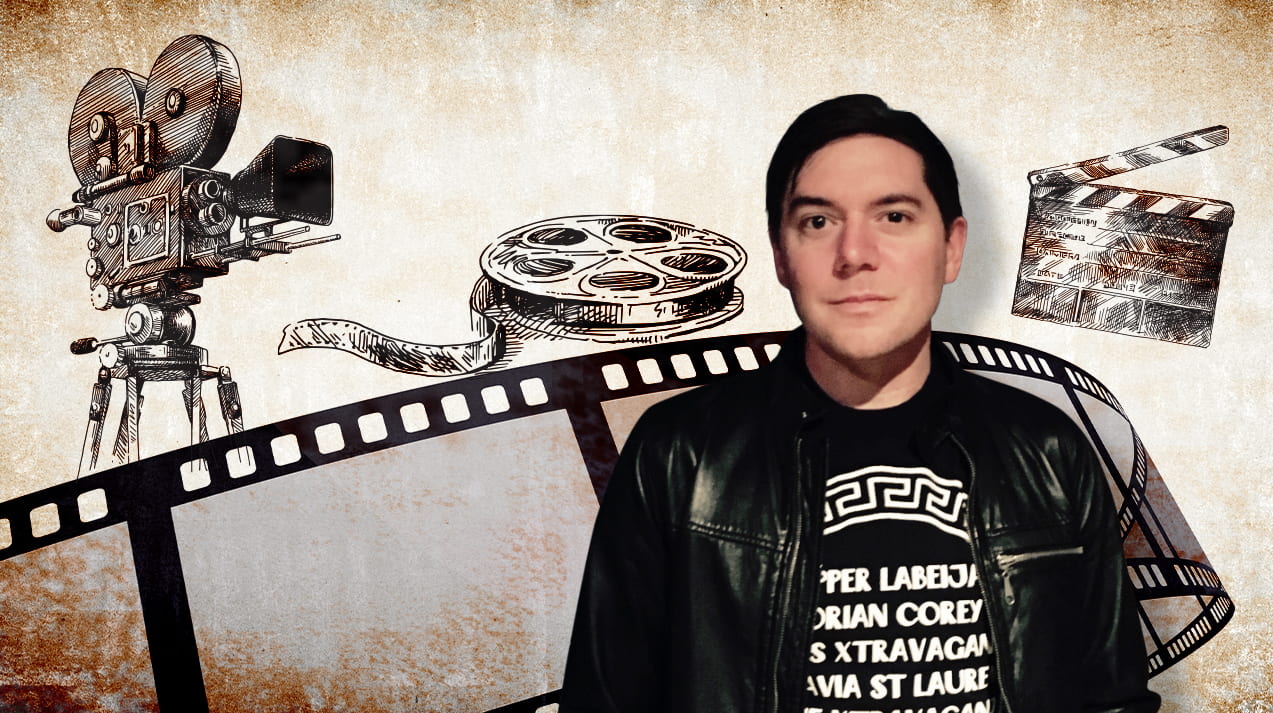What's next: The future of film
COVID-19 is likely to permanently alter the production, distribution and viewing of movies

Filmmaking is dynamic. From silent pictures to talkies, black-and-white to Technicolor, hand-painted sets to computer-generated imagery and simple to spectacular special effects, studios have constantly found new ways to entertain and delight moviegoers. But the pandemic’s transformational impact is more than just another shift in that trajectory. The “new normal” is the most radical change in the industry since the introduction of videotape.
Lucas Hilderbrand, UCI professor of film & media studies and visual studies, is the author of Inherent Vice: Bootleg Histories of Videotape and Copyright (Duke University Press, 2009), about the cultural and economic effect of the appearance of videotape and VCRs in homes across America in the mid-1970s. He describes it as a historical project “because I couldn’t predict what would happen, and anything that was current would be out of date by the time the book was in print.” We asked Hilderbrand to make some predictions now about the future of film.
Let’s start with filming and scene setting. How are studios adjusting to social distancing, and what impact is that having on how scripts are being adapted? Do you see this having long-lasting repercussions, beyond the pandemic?
In terms of production, as well as everything else, the studios and networks are still figuring things out. My sense from people who work adjacent to the industry is that there is some production happening with different on-set strategies – from having entire crews quarantined together to using real-life partners for intimate scenes. My understanding is that international production has resumed at closer to pre-pandemic levels. But things haven’t returned to normal in the U.S., and there is a backlog of scripts. I anticipate that we’ll see a two-pronged approach: smaller productions with fewer cast members or group scenes plus an emphasis on animation, CGI, and modes of production that can happen with voice talent who can work alone and with crews that can work remotely.
The distribution of films – getting them out into the public either on the big screen or through streaming – is a hot-button issue. How is the pandemic affecting this, and what can we expect to see after it’s over?
For decades, well before the coronavirus, there has been a trend toward home viewing. With streaming, that trend accelerated. Now, with the closure of theaters and many people staying home – voluntarily or by public orders – the pandemic has entrenched this. So viewing habits have already changed in ways that will have long-term effects.
I think the theater chains will be impacted more than anyone else in the industry, and we’ve begun to see chainwide closures and discussions of bankruptcy. Theaters are still not open in the largest markets in the U.S. The business model is that they make their money from concessions – and, recently, alcohol – more than from ticket sales, since much of that revenue goes back to the studios. There’s no real way for theaters to make up those lost sales. And it’s still unclear how safe movie theaters can be since people will take their masks off to eat popcorn, and it would be hard to enforce masks in the dark in any case.
As for the studios, they can recoup some lost theatrical revenue through deals with Netflix or via premium on-demand rentals. So films will still get made and distributed, but the experience of moviegoing will likely radically change and become far less common. We have seen a move toward makeshift drive-in experiences, but much of the country has weather that isn’t conducive to year-round outdoor viewing, and this seems like a novelty stopgap. It’s not clear that it has been profitable.
How do you see the pandemic and this shift in distribution affecting things such as the festival circuit and the awards circuit?
We’ve predominantly seen festivals move to a streaming format as well, though the Venice Film Festival did operate as a public event. In terms of the awards circuit, I think the Academy of Motion Picture Arts and Sciences is rethinking the rules about how films qualify for eligibility, but there will also be fewer films competing – meaning that a handful will likely become winners by default.
Will the pandemic be a big boost for the horror genre?
Horror is an evergreen genre! Its popularity never seems to wane, and film scholars have long argued that the genre allows for exploration of cultural anxieties perhaps better than any other. I’m sure we’ll see the pandemic become a plot point or metaphor. The question is whether people will want to be reminded of it or just want escapism. But concurrent with the pandemic, we’re seeing so many forms of violence, political crises and environmental disasters that there are many anxieties to work through simultaneously.
Movies are a business. What will the financial impact be in the executive suite?
I think the biggest question the studios face will be whether the blockbuster model – relying on huge grosses in the hundreds of millions of dollars, or even a billion, in return for budgets in the $200 million range – makes sense anymore. This summer we saw two test cases, with “Tenet” released theatrically and “Mulan” as a premium rental on Disney+. The industry’s takeaway seems to have been to postpone the release of the next James Bond film and to pivot to streaming for “Wonder Woman 1984.” Mid- and low-budget filmmaking had largely been pushed out of the theatrical market in recent years. So the question becomes: Will there now be space for these? I hope so. If we lose theatrical releases longer term, we might see an even bigger pivot from feature films toward series, which are typically more modestly budgeted and have strong audience investment and retention.
How has the pandemic affected filmmakers outside the studio system – independents and LGBTQ+?
In many ways, the economics of the industry had already seriously marginalized independent, foreign, documentary, LGBTQ+ and other cinemas beyond blockbusters. Streaming platforms and cable networks have become venues for these, and as more emerge and move toward proprietary content, the audience gets divided. Each seems to have its one marquee show per demographic, as opposed to a deep catalog. What remains to be seen is whether LGBTQ+ audiences are willing to pay for Hulu to see “Love, Victor” and Apple TV+ to see “Visible: Out on Television” and HBO Max to see “Legendary,” etc.
Do you see the coronavirus crisis causing the most radical change in the industry since videotape?
Certainly for theatrical exhibition, I’d say yes. The difference is that home video was ultimately hugely profitable for the studios. The pandemic raises different kinds of challenges, including how to safely produce new films and series. There’s demand for content on streaming platforms; we’ll have to see how the industry will meet the demand. I’m teaching the third class in our three-part history of cinema sequence, and every year I end the class differently. Last year, I ended with Marvel films and the debate about whether they’re “cinema.” This year, we’re ending with streaming, because we’re witnessing what may be the irreversible turn from cinema being a theatrical mode to becoming a predominantly streaming medium.


